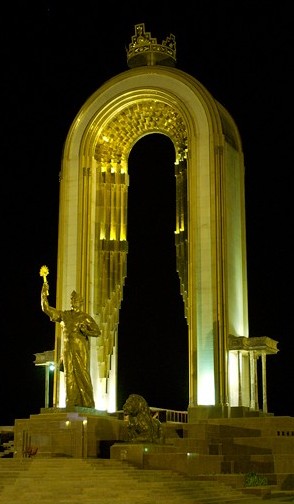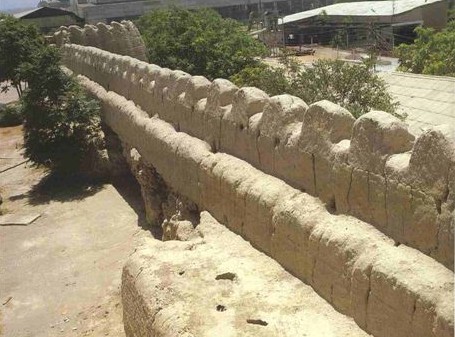
Here you can find any information about Tajikistan. Whether if you are interested in mountaineering, trekking, adventure travel or business, you can find here the travel information that you need to Travel to Tajikistan!

Photo of Week
Historical Places
Weather
Cities
- Dushanbe
- Gharm
- Isfara
- Khorog
- Khudjand
- Kofarnihon
- Konibodom
- Kulob (aka Kulyab)
- Murghob
- Qurghonteppa
- Panjakent
- Parkhar
- Panj
- Shaartuz
- Shurab
- Tursunzoda
- Istaravshan (Urateppa)

The most revered figures from Tajikistan's Persian past are the 10th century philosopher-scientist Abu Ali ibn Sina, author of two of the most important books in the history of medicine, and the poet Rudaki, court poet in Bukhara in the time of the Samanids. Tajiks also venerate Firdausi, a poet and composer of the Shah-nameh (Book of Kings), the Persian national epic, and Omar Khayyam, of Rubaiyat fame, both born in present-day Iran but at a time when it was in the same empire as Tajikistan.
When Tajikistan was hived off from Uzbekistan in 1929, the new nation-state was forced to leave behind its cultural baggage
The new Soviet order set about providing a replacement pantheon of arts, introducing modern drama, opera and ballet. The policy paid early dividends and the 1940s are considered a golden era of Tajik theatre. A kind of Soviet fame came to some Tajik novelists and poets, such as Mirzo Tursunzade and Sadriddin Ayni, the latter now remembered more as a deconstructor of national culture because of his campaign to eliminate all Arabic expressions and references to Islam from the Tajik tongue. Since independence there has been something of a cultural revival in an attempt to foster a sense of national identity. The succuss of Tajikistan's most popular living writer, Taimur Zulfikarov, is attributed to his abiity to mimic the ancient Persian style of writing and, in doing so, to appeal to nationalist sentiments.
Most Tajiks are Muslim (Sunni) but they are not, by and large, militant or particularly strict. Though the harnessing of Islamic sentiment has been a stronger political force in Tajikistan than in other Central Asian republics, the rural, often semi-nomadic lifestyle preferred by most Tajiks is unsuited to central religious authority. Many older Tajik men continue to dress in long quilted jackets, knee-length boots and embroidered caps. Women of all ages favour psychedelically coloured, gold-threaded long dresses with striped trousers underneath and head scarves to match.
In these days of civil strife and economic chaos, meat often gives way to vegetables on the Tajik dinner table. Chickpea samsas or porridge are common, as are soups made from beans, milk and herbs. Tuhum barak is a tasty egg-filled ravioli coated with sesame seed oil. Chakka is curd mixed with herbs, and delicious with flat bread. When meat (usually mutton) is available, it's often made into tushbera (steamed dumplings), served plain or with vinegar or butter.

See other photos...
National Bread
Copyright 2007. Created by V-design Www.V-dEsIgN.t35.CoM
